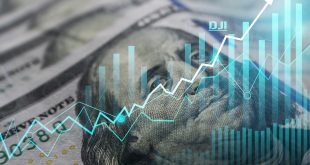The chances of a soft landing are getting better, but the Australian economy still seems to be in a holding pattern. It’s far from certain that the unemployment rate will stay below 4%, that wages will catch up to or surpass inflation, or even that the federal budget will continue to balance.
August and September could see a spike in inflation, with petrol acting as a driver rather than a resistor of price increases, while petrol and electricity prices are likely to continue to grow.
The decline in inflation won’t be stopped by a weaker Australian currency, so the Reserve Bank kept interest rates unchanged for a third consecutive month. The persistent housing market stress in China fuels concern on a global scale, but barring a nasty surprise, the RBA’s rate hike looks to be over. The job market is competitive, and although the economy is declining, it is not stagnating.
The Australian Bureau of Statistics’s release of national accounts ought to support this optimistic forecast. GDP growth in the June quarter likely picked up from the 0.2% pace in the previous three months, and the annual pace may have slowed from 2.3% in the March quarter to perhaps 1.8%.
Before the start of the New York morning session, the Australian dollar dropped to a 10-month low of 0.6360. After the Reserve Bank of Australia (RBA) kept interest rates at 4.10%, signalling probable policy tightening, the Australian asset underwent a sell-off. At the time of writing, the pair is trading at 0.6384.
A negative opening for the S&P 500 is anticipated due to overnight futures’ bearish signals. Investors are worried about the state of the world economy and the potential that western central banks would maintain higher interest rates for a lengthy period of time as US markets are expected to open after a long weekend.
Gita Gopinath, the IMF’s first deputy managing director, issued a warning that the geopolitical fragmentation, tightening financial conditions, and rising costs of climate change have made the external environment for emerging markets increasingly difficult. Due to the weakening Caixin Manufacturing PMI for August and the central banks’ tightening of monetary policy, the US Dollar Index (DXY) is under slight selling pressure.
The ISM Services PMI for August is expected to remain broadly unchanged at 52.7. Investors will also be watching Q2 GDP data, as the Australian economy grew at a 0.3% pace compared to a 0.2% pace for Q1.

 Noor Trends News, Technical Analysis, Educational Tools and Recommendations
Noor Trends News, Technical Analysis, Educational Tools and Recommendations




